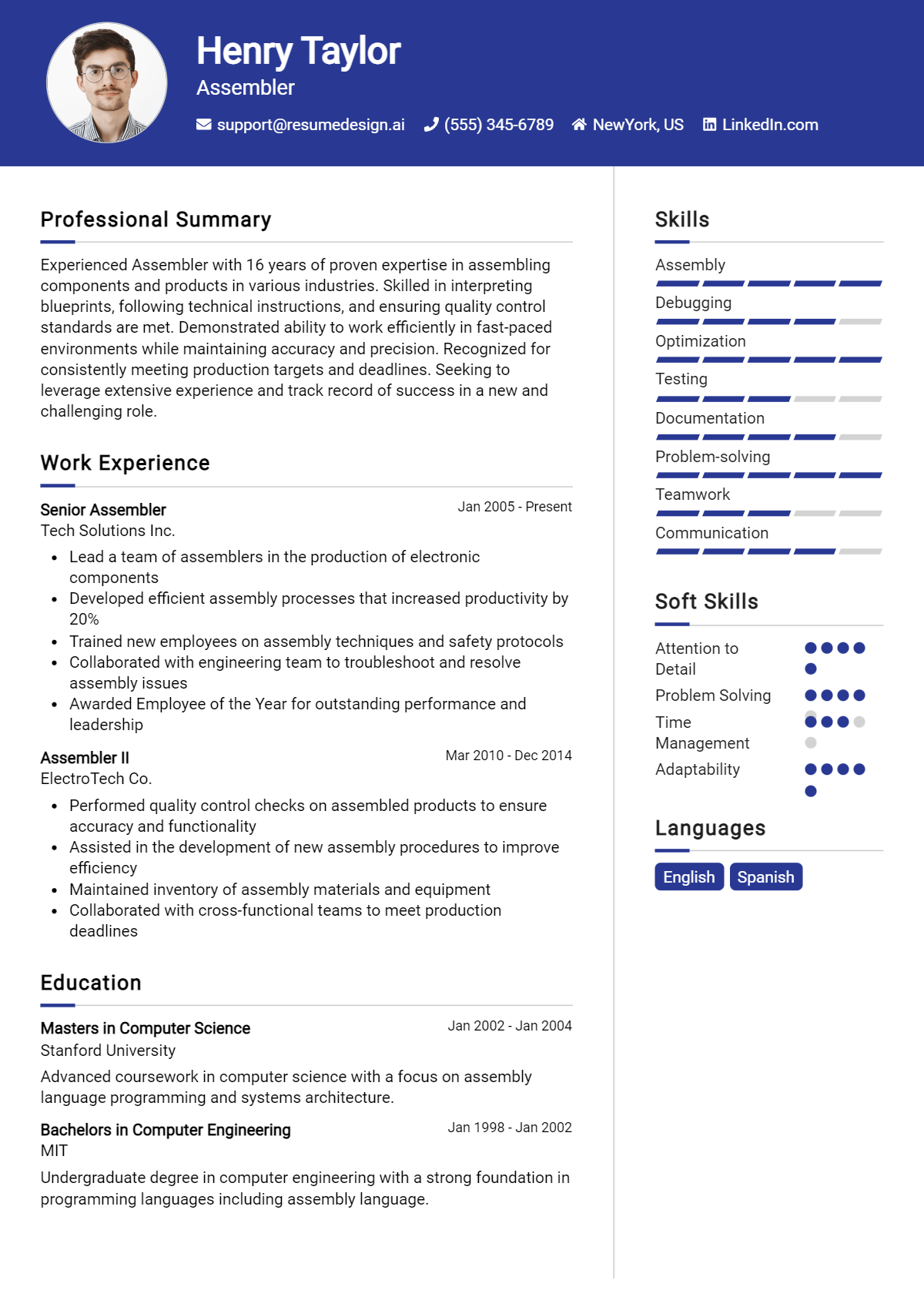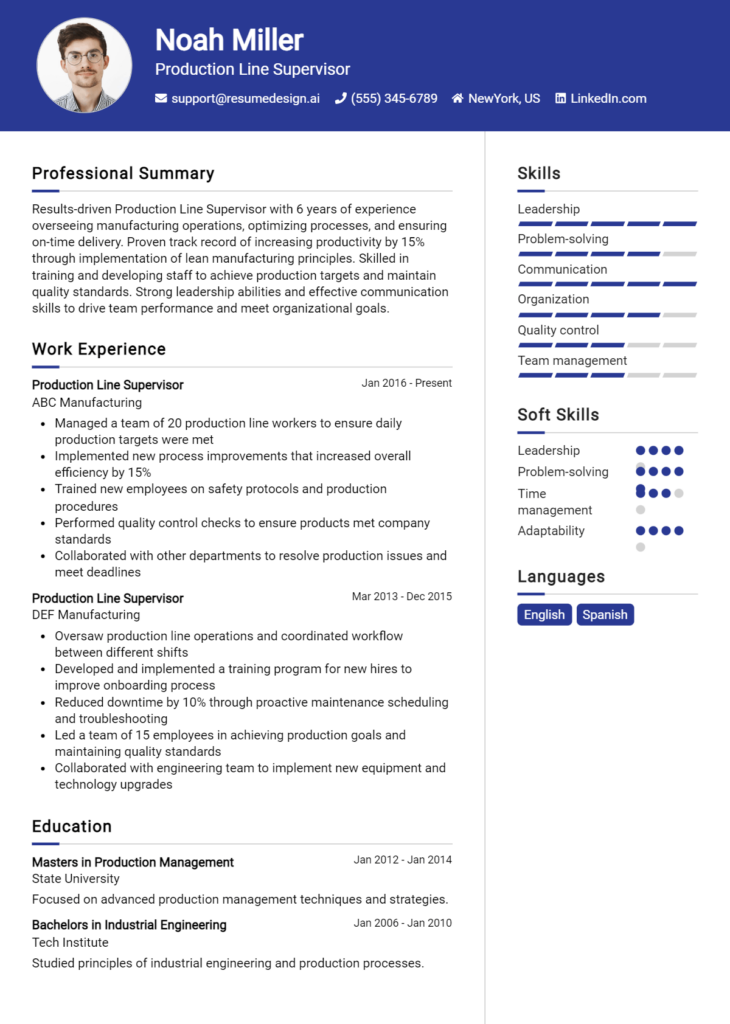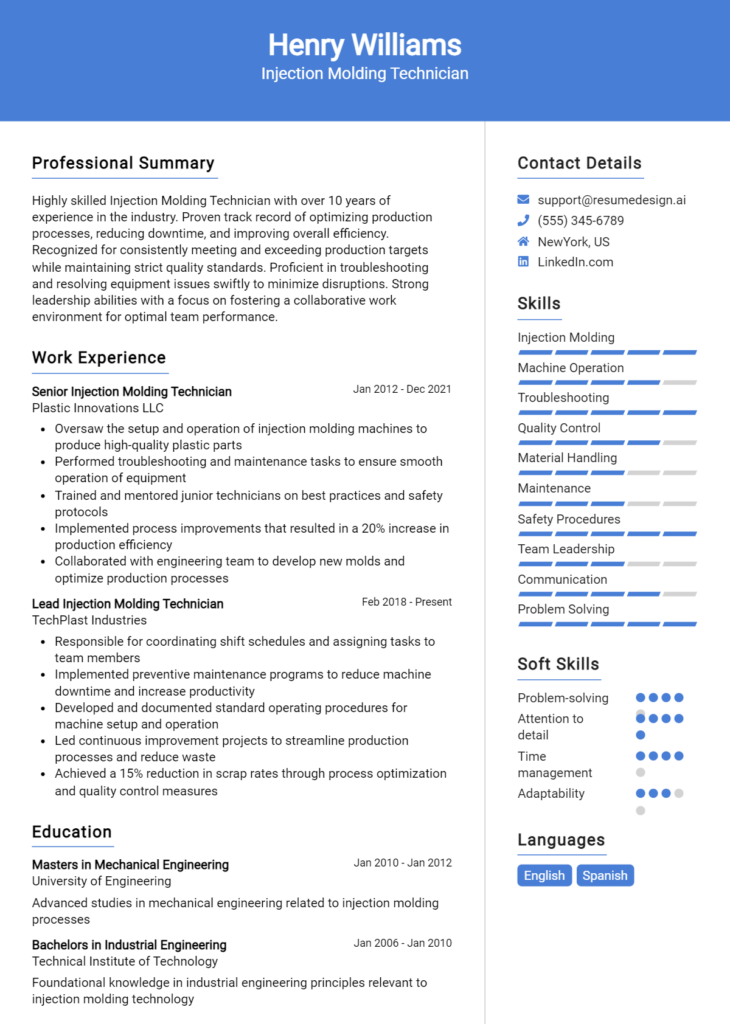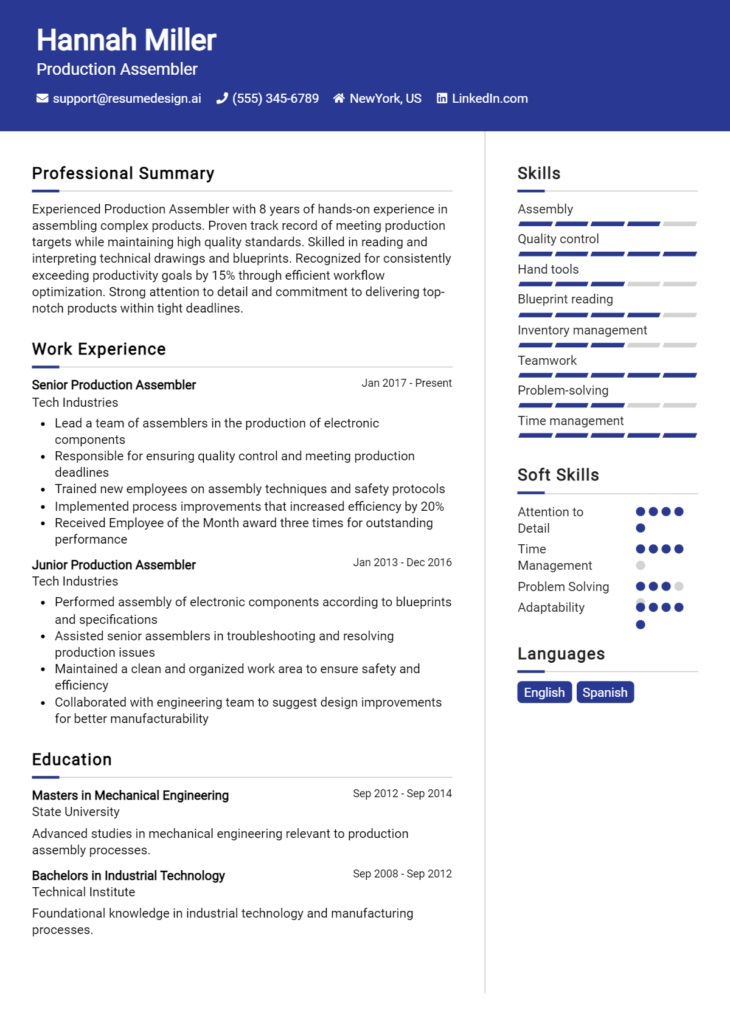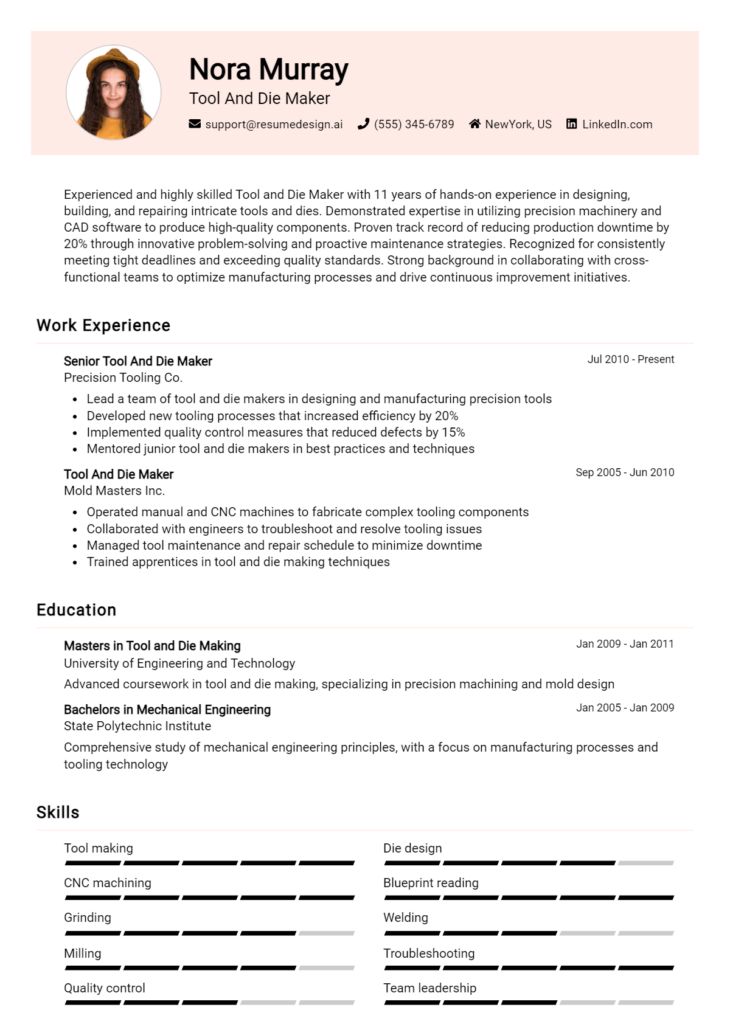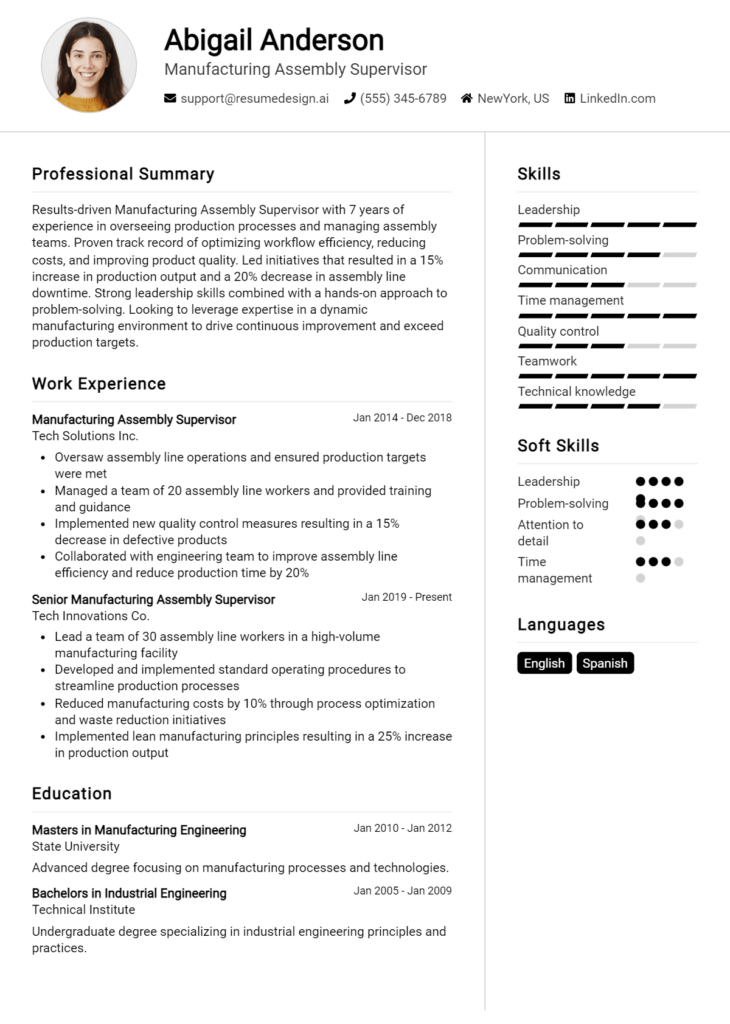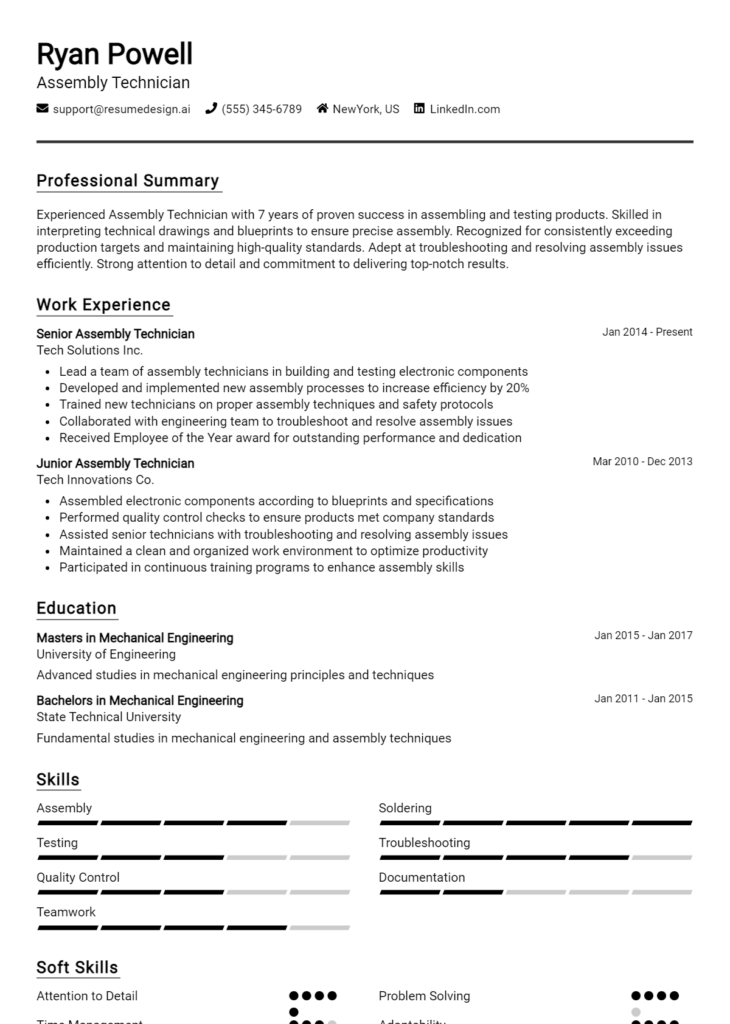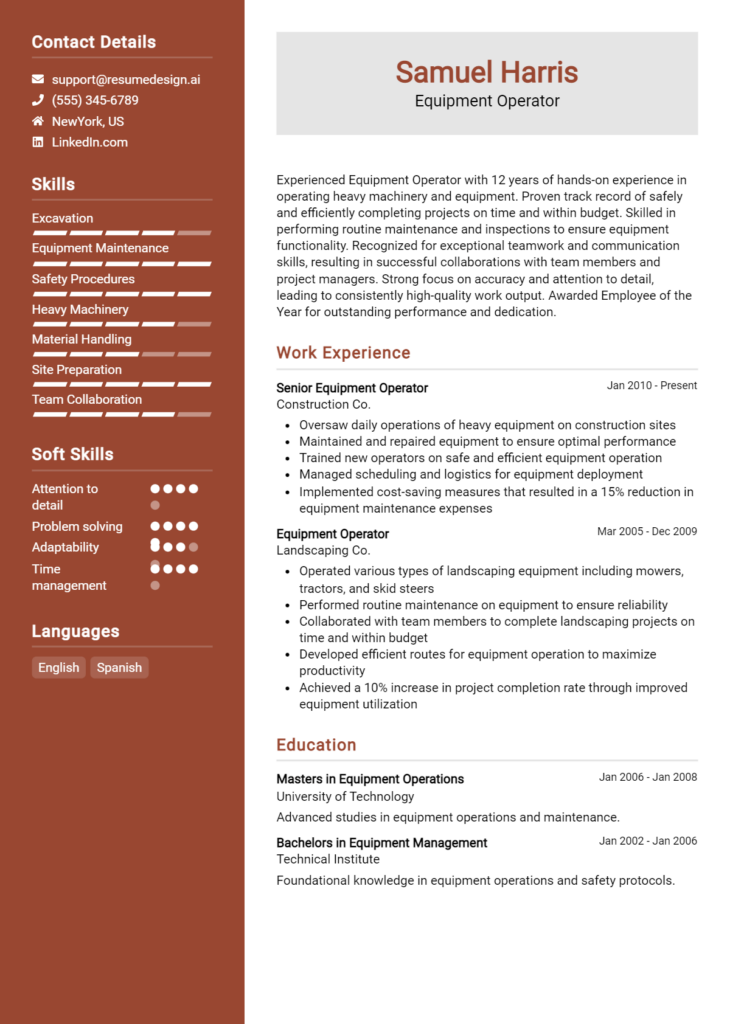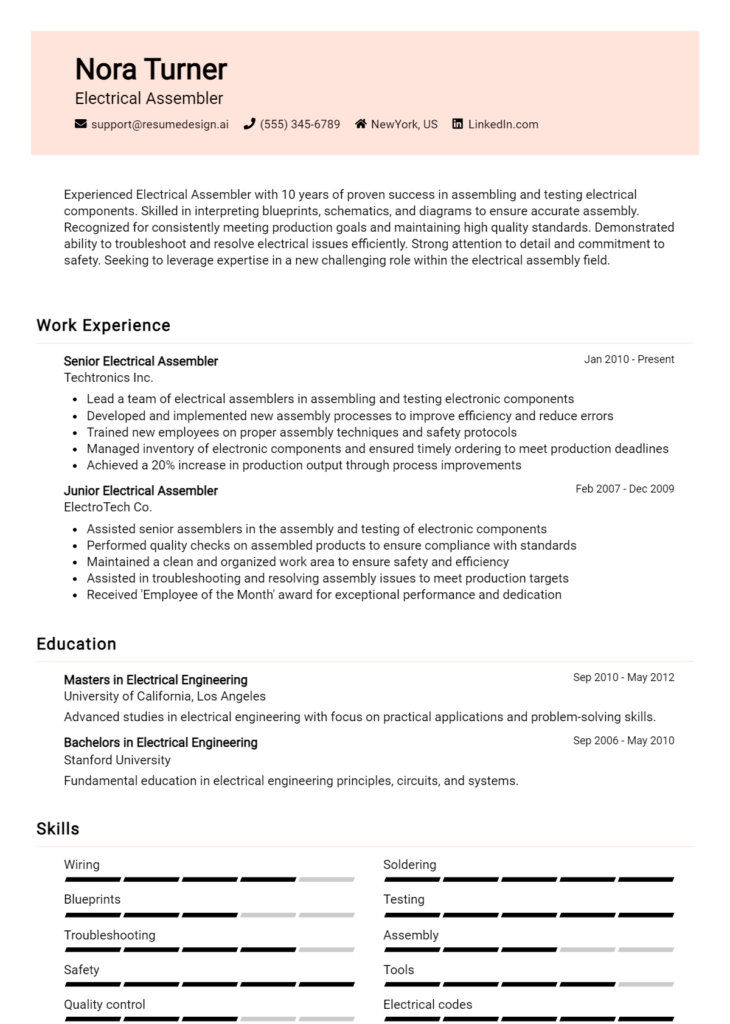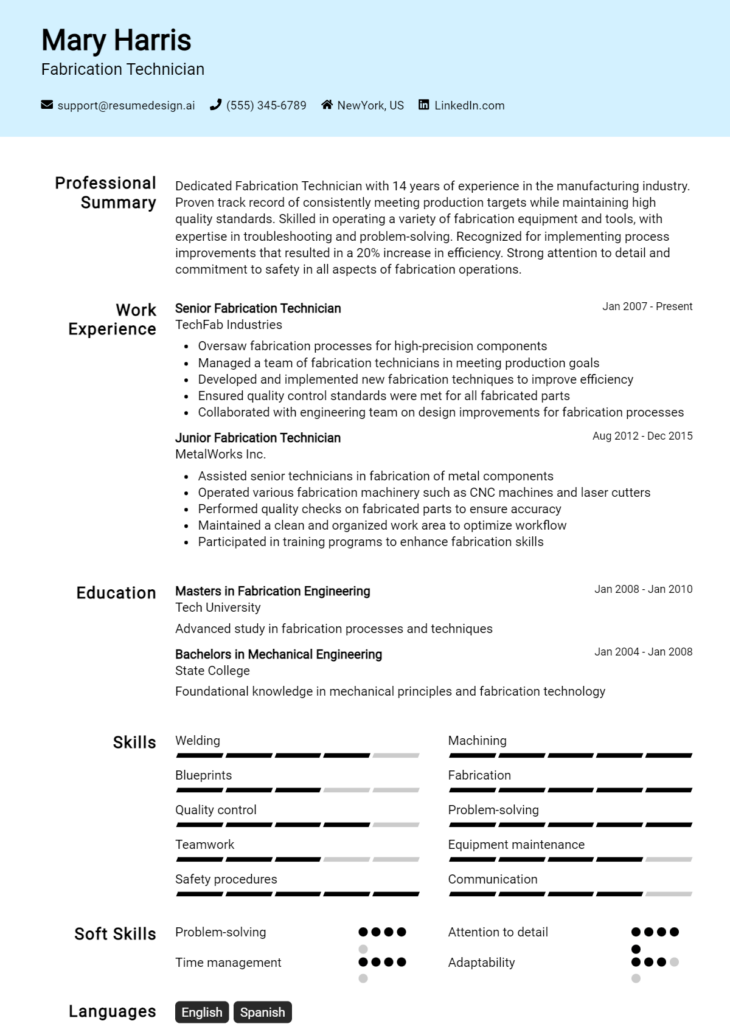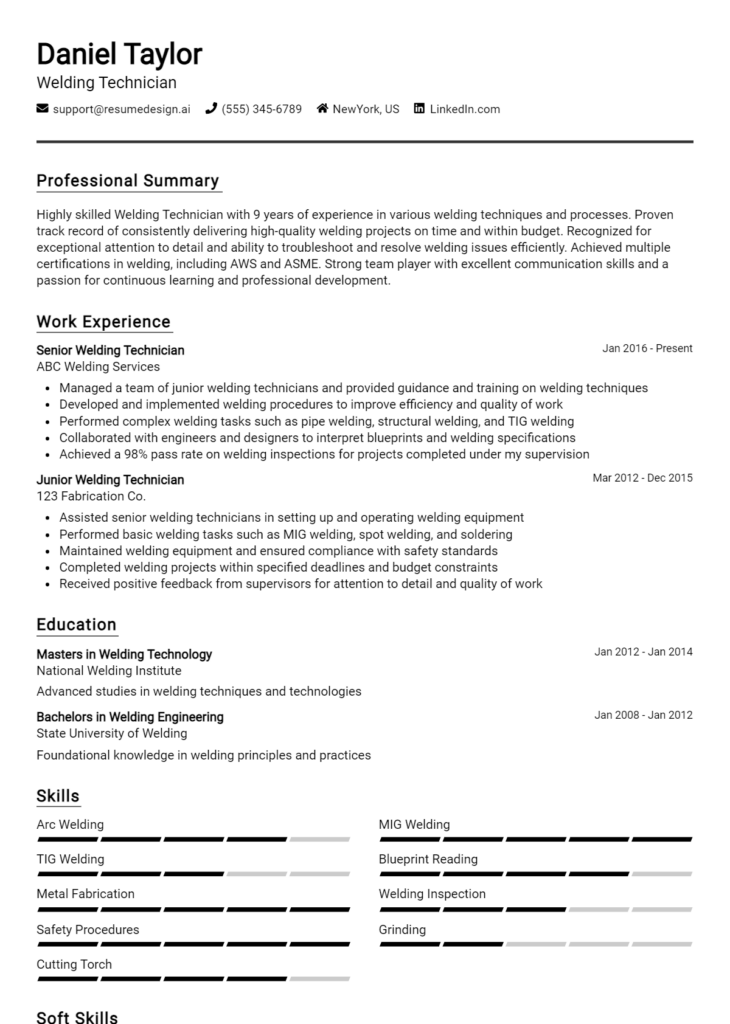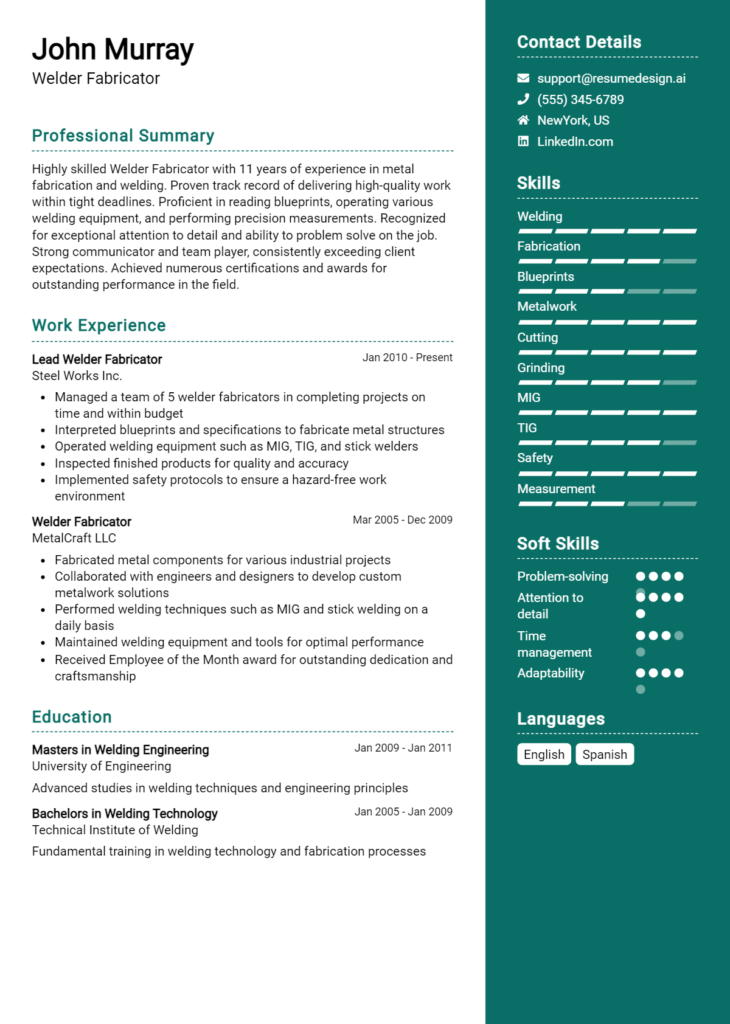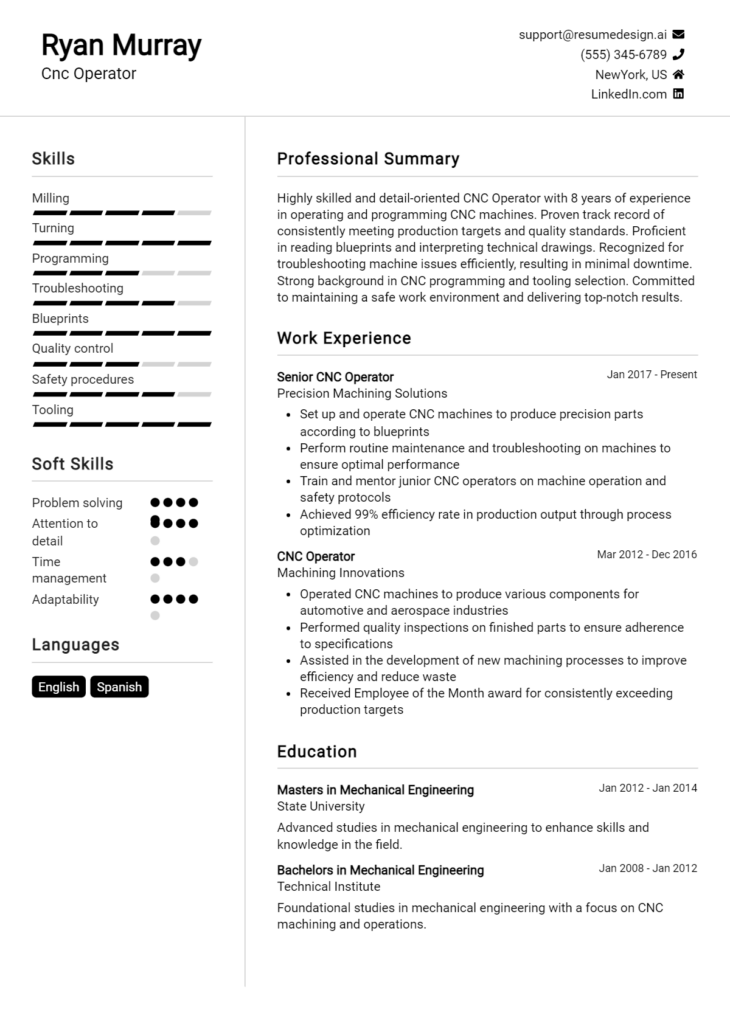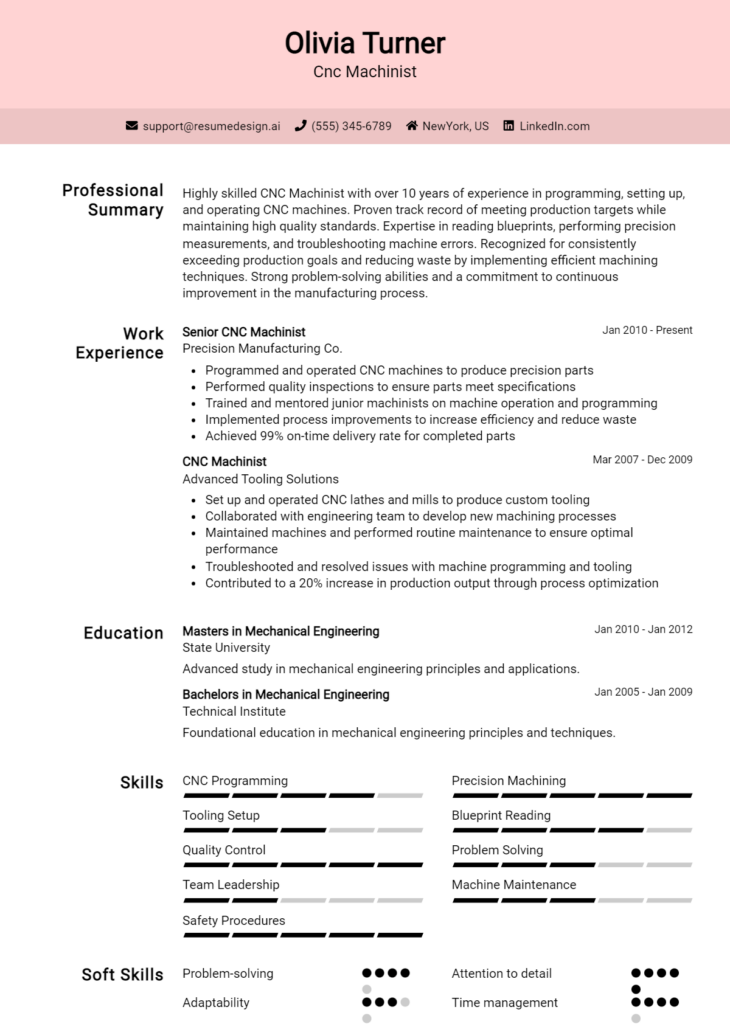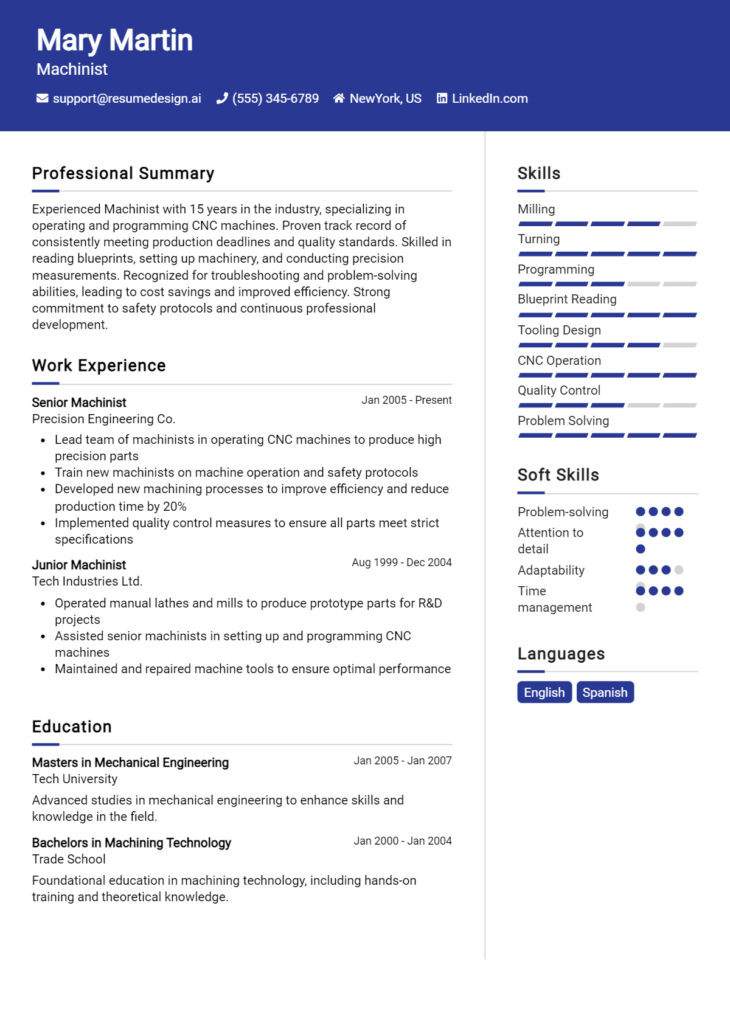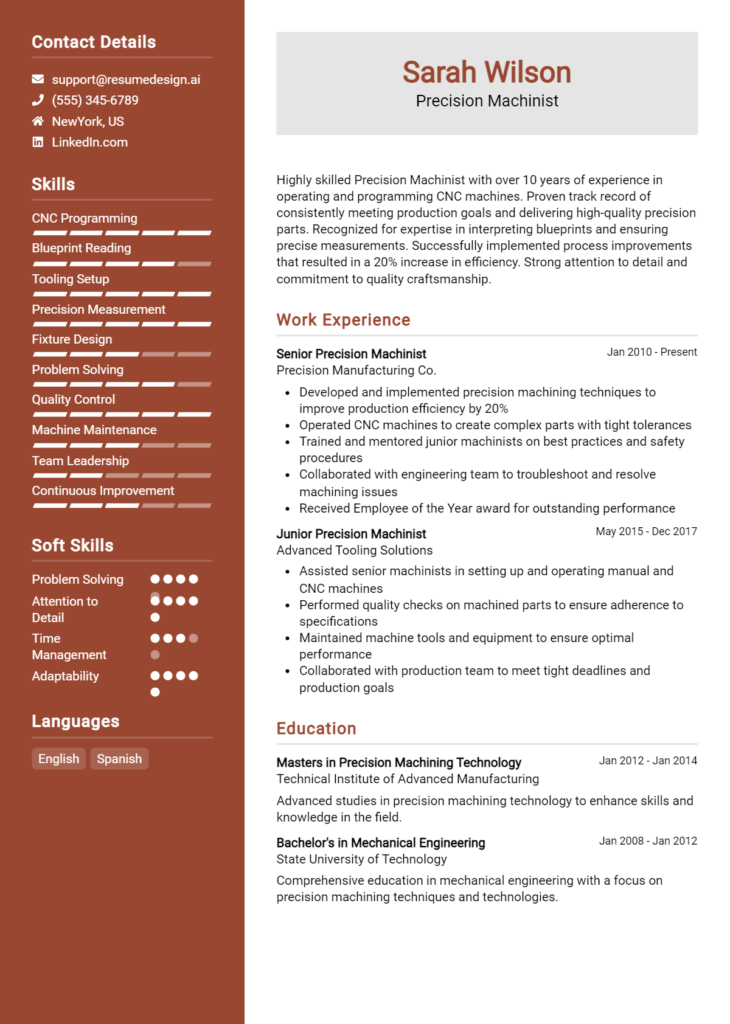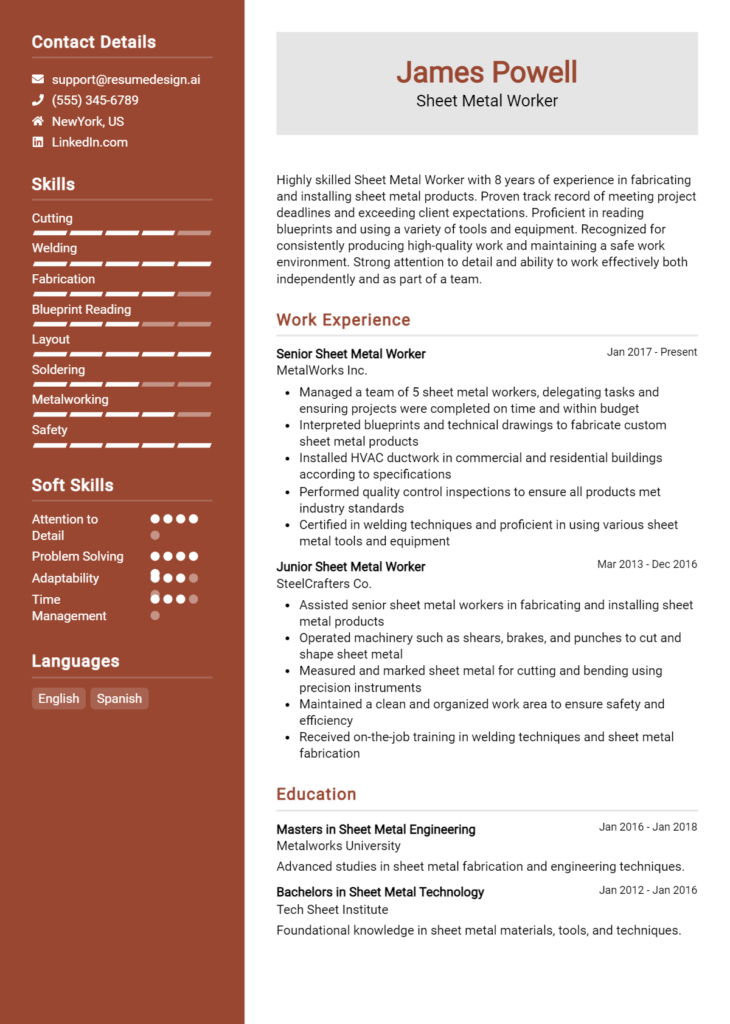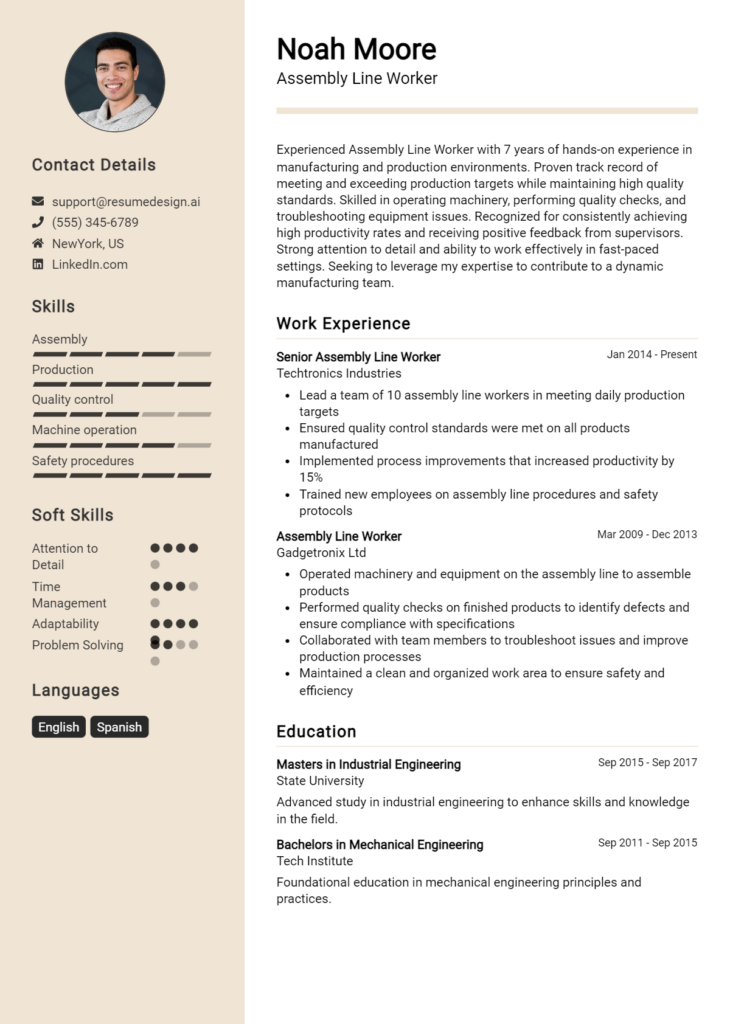Assembler Core Responsibilities
The Assembler plays a crucial role in manufacturing by meticulously piecing together components to create a finished product. Key responsibilities include interpreting blueprints, collaborating with engineering and quality assurance teams, and ensuring adherence to safety and quality standards. Essential skills encompass technical proficiency, operational understanding, and strong problem-solving capabilities. These qualifications not only enhance individual performance but also contribute to the organization’s efficiency and goals. A well-structured resume effectively highlights these competencies, making candidates stand out in a competitive job market.
Common Responsibilities Listed on Assembler Resume
- Interpreting and following detailed assembly instructions and blueprints.
- Assembling components and parts accurately and efficiently.
- Conducting quality inspections of finished products.
- Collaborating with engineering and production teams to optimize assembly processes.
- Maintaining a clean and organized work environment.
- Calibrating and operating machinery and tools as needed.
- Identifying and resolving assembly-related issues or discrepancies.
- Documenting production processes and maintaining accurate records.
- Training new assemblers on techniques and safety protocols.
- Adhering to safety regulations and company policies.
- Participating in continuous improvement initiatives to enhance productivity.
High-Level Resume Tips for Assembler Professionals
In today’s competitive job market, a well-crafted resume is crucial for Assembler professionals looking to make a lasting impression on potential employers. Your resume is often the first opportunity to showcase your skills and achievements, serving as a gateway to interviews and job offers. It needs to reflect not only your technical abilities but also your commitment to quality and efficiency in the assembly process. In this guide, we’ll provide practical and actionable resume tips specifically tailored for Assembler professionals to help you stand out from the crowd.
Top Resume Tips for Assembler Professionals
- Tailor your resume to match the specific job description, emphasizing relevant skills and experiences that align with the role.
- Highlight your hands-on experience with assembly processes, including any specific machinery or tools you are proficient with.
- Quantify your achievements where possible, such as the number of units assembled per hour or improvements in production efficiency.
- Include industry-specific terminology to demonstrate your familiarity with the field and to catch the attention of hiring managers.
- List relevant certifications or training programs that enhance your qualifications, such as safety training or quality control courses.
- Showcase soft skills that are crucial for Assembler roles, like attention to detail, teamwork, and problem-solving abilities.
- Utilize bullet points for clarity and to make your resume easy to read, ensuring that key information stands out.
- Keep your resume concise, ideally one page, focusing on the most relevant experience and skills for the position.
- Incorporate action verbs to convey your contributions effectively, such as "assembled," "inspected," or "collaborated."
- Proofread your resume meticulously to eliminate any errors, ensuring that it reflects your professionalism and attention to detail.
By implementing these tips, you can significantly enhance your resume and increase your chances of landing a job in the Assembler field. A well-structured resume tailored to the specific requirements of the position not only showcases your qualifications but also demonstrates your dedication to the role, making you a more appealing candidate to potential employers.
Why Resume Headlines & Titles are Important for Assembler
In the competitive job market, an Assembler’s resume needs to stand out, and one of the most effective ways to achieve this is through a strong resume headline or title. A well-crafted headline can immediately capture the attention of hiring managers, succinctly summarizing a candidate's key qualifications in one impactful phrase. It serves as the first impression and should be concise, relevant, and directly related to the job being applied for, making it essential for showcasing the candidate's unique strengths and expertise in assembly work.
Best Practices for Crafting Resume Headlines for Assembler
- Keep it concise and to the point.
- Use specific keywords related to the assembler role.
- Highlight relevant skills or certifications.
- Incorporate measurable accomplishments, if possible.
- Tailor the headline to match the job description.
- Avoid generic phrases, focusing instead on unique strengths.
- Use action-oriented language to convey confidence.
- Consider including years of experience for added credibility.
Example Resume Headlines for Assembler
Strong Resume Headlines
Detail-Oriented Assembler with 5+ Years of Experience in Electronics Manufacturing
Skilled Assembler Specializing in Precision Assembly and Quality Control
Efficient Production Assembler with Proven Track Record in Meeting Tight Deadlines
Weak Resume Headlines
Assembler Seeking Job
Experienced Worker in Manufacturing
The strong headlines are effective because they clearly communicate the candidate's specific skills, experience, and value to potential employers while also incorporating relevant keywords that align with the assembler role. In contrast, the weak headlines fail to impress due to their vagueness and lack of detail, making it difficult for hiring managers to gauge the candidate's qualifications or unique selling points at a glance.
Writing an Exceptional Assembler Resume Summary
A resume summary is a crucial component for an Assembler's job application, serving as the first impression for hiring managers. A well-crafted summary quickly captures attention by succinctly showcasing key skills, relevant experience, and notable accomplishments that align with the job requirements. It acts as a snapshot of the candidate's qualifications, making it easier for employers to identify the best fit for their team. A strong summary should be concise, impactful, and tailored specifically to the job being applied for, ensuring that it resonates with the employer’s needs and expectations.
Best Practices for Writing an Assembler Resume Summary
- Quantify Achievements: Use numbers to highlight your accomplishments, such as production rates or error reduction percentages.
- Focus on Relevant Skills: Emphasize skills that are directly applicable to the assembler role, like attention to detail, technical proficiency, and teamwork.
- Tailor to Job Description: Customize your summary to reflect the specific requirements and keywords found in the job posting.
- Keep it Concise: Aim for 2-4 sentences that deliver maximum impact without unnecessary fluff.
- Highlight Certifications: If you have relevant certifications, mention them to demonstrate your qualifications.
- Showcase Industry Experience: Include years of experience in the industry or specific environments that relate to the job.
- Use Action Words: Start sentences with strong action verbs to convey initiative and competence.
- Demonstrate Problem-Solving: Illustrate your ability to solve problems and improve processes in past roles.
Example Assembler Resume Summaries
Strong Resume Summaries
Detail-oriented Assembler with over 5 years of experience in high-volume manufacturing environments. Proven track record of increasing production efficiency by 20% through process optimization and quality control measures.
Skilled Assembler with expertise in electronic component assembly and soldering. Successfully reduced assembly errors by 15% in previous role, leading to improved product quality and customer satisfaction.
Dedicated Assembler with 7 years of experience in automotive parts manufacturing. Recognized for exceptional teamwork and safety record, contributing to a 30% reduction in workplace accidents over two years.
Weak Resume Summaries
Assembler with some experience in manufacturing and assembly work. Looking for a job where I can use my skills.
Hardworking assembler eager to learn and contribute to the team. I have worked in various jobs and am ready for new challenges.
The strong resume summaries are considered effective because they provide specific metrics and accomplishments that demonstrate the candidate's qualifications, while also aligning with the expectations of the assembler role. Conversely, the weak summaries lack detail and quantifiable outcomes, making them too vague and generic to grab the attention of hiring managers.
Work Experience Section for Assembler Resume
The work experience section of an Assembler resume is a critical component that allows candidates to demonstrate their technical skills and capabilities in a tangible way. This section not only highlights the applicant's hands-on experience with various assembly techniques and tools but also showcases their ability to lead teams and ensure the delivery of high-quality products. By quantifying achievements—such as the number of units produced, efficiency improvements, or safety records—candidates can effectively align their experiences with industry standards, making a strong case for their qualifications and readiness for the role.
Best Practices for Assembler Work Experience
- Focus on specific technical skills relevant to the assembly process, such as proficiency with tools and machinery.
- Quantify achievements with metrics, such as production rates, error reduction percentages, or cost savings.
- Highlight collaborative projects where teamwork led to successful outcomes.
- Use action verbs to convey a sense of responsibility and initiative in past roles.
- Tailor experiences to align with job descriptions, ensuring relevance to the position applied for.
- Include certifications or training that enhance technical expertise and credibility.
- Emphasize problem-solving skills, particularly in resolving assembly line issues or optimizing processes.
- Showcase adaptability by mentioning experience with various assembly processes or shifts in production methods.
Example Work Experiences for Assembler
Strong Experiences
- Led a team of 10 assemblers in a high-volume production environment, achieving a 15% increase in output efficiency over six months.
- Implemented a new quality control procedure that reduced defects by 20%, resulting in a cost savings of $30,000 annually.
- Trained new employees on assembly techniques and safety protocols, contributing to a 40% decrease in workplace accidents.
- Collaborated with engineering teams to redesign assembly processes, reducing assembly time by 25% while maintaining product quality.
Weak Experiences
- Worked as an assembler in a factory for a few months.
- Helped with some assembly tasks and followed instructions.
- Occasionally collaborated with team members on projects without specific outcomes.
- Participated in meetings about assembly processes.
The examples provided illustrate a clear distinction between strong and weak experiences. Strong experiences are characterized by specific, quantifiable outcomes and demonstrate leadership, problem-solving, and collaboration, which are essential for an assembler role. In contrast, weak experiences lack detail and measurable results, making it difficult for potential employers to gauge the candidate's capabilities and contributions effectively.
Education and Certifications Section for Assembler Resume
The education and certifications section of an Assembler resume plays a critical role in showcasing the candidate's academic background and commitment to professional growth. This section is essential as it highlights relevant degrees, industry-recognized certifications, and any specialized training that the candidate has undertaken. By providing detailed information about coursework and certifications, candidates can significantly enhance their credibility and demonstrate their alignment with the job requirements. This not only underscores their technical aptitude but also reflects their dedication to continuous learning and improvement in their field.
Best Practices for Assembler Education and Certifications
- Focus on relevant degrees and certifications that directly relate to the assembler role.
- Include the most recent education or certifications first, followed by older qualifications.
- Highlight any specialized training programs that are recognized in the industry.
- Provide brief descriptions of relevant coursework, especially if it pertains to assembly processes or safety standards.
- Make sure to include certifications from reputable organizations that are well-regarded in manufacturing or assembly.
- Use bullet points for clarity and ease of reading, ensuring that key information stands out.
- Consider adding any ongoing education or professional development courses to showcase a commitment to continuous improvement.
- Avoid cluttering this section with irrelevant degrees or certifications that do not pertain to assembly work.
Example Education and Certifications for Assembler
Strong Examples
- Associate Degree in Industrial Technology, ABC Community College, 2022
- Certified Production Technician (CPT), Manufacturing Skills Standards Council, 2023
- OSHA Forklift Certification, 2023
- Coursework in Lean Manufacturing Principles, XYZ University, 2021
Weak Examples
- Bachelor's Degree in Philosophy, DEF University, 2015
- Certification in Graphic Design, GHI Institute, 2019
- High School Diploma, JKL High School, 2010 (not relevant for experienced positions)
- Old First Aid Certification, 2012 (not current or relevant)
The strong examples are considered effective because they are directly applicable to the assembler role, showcasing educational qualifications and certifications that enhance the candidate's suitability for the position. These examples emphasize relevant skills and knowledge necessary for success in assembly tasks. In contrast, the weak examples reflect qualifications that do not relate to the assembler job, either by being outdated, irrelevant, or lacking industry significance, which could detract from the candidate's appeal to potential employers.
Top Skills & Keywords for Assembler Resume
In the competitive job market for assemblers, showcasing the right skills in your resume is essential for standing out to potential employers. An assembler's role requires a blend of technical know-how and interpersonal abilities, making a well-crafted skills section crucial. Employers often look for both hard skills—specific, teachable abilities—and soft skills—personal attributes that enhance collaboration and productivity. By highlighting your relevant skills, you not only demonstrate your qualifications but also your readiness to contribute effectively to a team. For insights on how to effectively present your skills and work experience, consider leveraging resources that guide you in crafting a compelling resume.
Top Hard & Soft Skills for Assembler
Soft Skills
- Attention to Detail
- Problem-Solving
- Teamwork and Collaboration
- Communication Skills
- Time Management
- Adaptability
- Critical Thinking
- Work Ethic
- Reliability
- Initiative
Hard Skills
- Blueprint Reading
- Electrical Component Assembly
- Mechanical Assembly
- Quality Control Procedures
- Hand Tool Operation
- Machine Operation
- Soldering Techniques
- Safety Compliance
- Inventory Management
- Technical Documentation
- Basic Computer Skills
- Knowledge of Manufacturing Processes
- Precision Measurement
- Welding Techniques
- Repair and Maintenance Skills
- Production Line Experience
By integrating a comprehensive list of both soft and hard skills in your resume, you can effectively showcase your qualifications as an assembler and enhance your chances of landing your desired position. For further guidance on how to best highlight your skills, explore additional resources that can aid in your resume development.
Stand Out with a Winning Assembler Cover Letter
Dear Hiring Manager,
I am writing to express my interest in the Assembler position at [Company Name] as advertised on [Job Board/Company Website]. With a strong background in assembly line work and a keen eye for detail, I am excited about the opportunity to contribute to your team. My hands-on experience in assembling various products, combined with my commitment to quality and efficiency, makes me a fitting candidate for this role.
In my previous role at [Previous Company Name], I was responsible for assembling components for electronic devices. This position honed my ability to follow detailed specifications and blueprints while maintaining high standards of precision. I take pride in my ability to work under tight deadlines while ensuring safety and quality protocols are met. My dedication to teamwork and effective communication has also enabled me to collaborate successfully with engineers and quality control teams, ensuring that all products meet the necessary standards before reaching the customer.
I am particularly drawn to [Company Name] because of your commitment to innovation and excellence. I am eager to bring my technical skills and problem-solving abilities to your team, ensuring that production processes run smoothly and efficiently. I believe that my proactive approach to identifying potential improvements and my willingness to learn will contribute positively to your operations. I am excited about the possibility of being part of a company that values quality and teamwork as much as I do.
Thank you for considering my application. I look forward to the opportunity to discuss how my experience and skills align with the needs of your team. I am confident that my background as an Assembler will allow me to make meaningful contributions at [Company Name].
Sincerely,
[Your Name]
Common Mistakes to Avoid in a Assembler Resume
When crafting a resume for an assembler position, it’s crucial to present your skills and experiences effectively. Many candidates make common mistakes that can hinder their chances of landing an interview. By avoiding these pitfalls, you can create a more compelling resume that highlights your qualifications and fits the job requirements. Here are some common mistakes to be aware of:
Generic Objective Statements: Using a one-size-fits-all objective can make your resume seem impersonal. Tailor your objective to reflect your specific aspirations in the assembler role and the company you're applying to.
Lack of Relevant Skills: Failing to list specific skills related to assembly work, such as proficiency with hand tools or machinery, can leave employers questioning your qualifications. Make sure to highlight relevant technical skills.
Ignoring Job Descriptions: Not aligning your resume with the job description can be a missed opportunity. Use keywords from the job posting to demonstrate that you meet the employer's requirements.
Overlooking Certifications: If you have relevant certifications (like OSHA safety training or equipment operation), be sure to include them. Omitting these can make you less competitive among other candidates.
Not Quantifying Achievements: Simply stating your job duties without quantifying your achievements can weaken your resume. Use numbers to illustrate your contributions, such as the number of units assembled or efficiency improvements.
Poor Formatting: A cluttered or unprofessional layout can distract from your qualifications. Use clear headings, bullet points, and consistent font styles to enhance readability.
Typos and Grammatical Errors: Spelling or grammatical mistakes can give the impression of carelessness. Always proofread your resume and consider having someone else review it for errors.
Excessive Length: A resume that is too long can overwhelm hiring managers. Aim for one page unless you have extensive relevant experience, and focus on the most pertinent information to the assembler role.
Conclusion
In this article, we explored the essential skills and qualifications required for the Assembler role, highlighting the importance of attention to detail, mechanical aptitude, and the ability to work collaboratively in a team environment. We also discussed the typical responsibilities of an Assembler, including reading blueprints, operating machinery, and adhering to safety protocols.
As you prepare to apply for an Assembler position, it's crucial to ensure that your resume effectively showcases your relevant skills and experiences. To help you stand out, consider utilizing various resources available to enhance your application. You can find useful resume templates that cater specifically to your field, or take advantage of a resume builder for a user-friendly experience in creating a polished resume.
Additionally, reviewing resume examples can provide inspiration and insight into what hiring managers are looking for. Don't forget the importance of a compelling cover letter; you can access cover letter templates to craft a persuasive introduction to your application.
Take action today by reviewing your Assembler resume and utilizing these tools to improve your chances of landing the job. Your next opportunity awaits!

